In the two-day tour package with Angkor Pioneer Tour, we will take you to visit the famous historical landmarks of Cambodia as listed below. If you wish to visit other tourist sites that are not included in the tour package we have arranged, you can also create your own custom tour package. Simply click on the phrase ‘Customize your trip,’ then write the names of the tourist sites you would like to visit and send them to us.
Siem Reap



Watching the sunrise at Angkor Wat temple in Cambodia is an experience that transcends mere sightseeing—it’s a journey into the heart of history, spirituality, and natural beauty. For photography enthusiasts, the sunrise at Angkor Wat presents an unparalleled opportunity to capture stunning images of one of the world’s most iconic landmarks. The interplay of light and shadow, the silhouettes of temple spires against the dawn sky, and the reflection of the temple in the nearby ponds create an endless array of compositions waiting to be captured. Whether you’re a professional photographer or simply someone who appreciates the beauty of nature, the sunrise at Angkor Wat offers a visual feast that will leave you spellbound. Ultimately, the sunrise at Angkor Wat is not just about what you see, but how it makes you feel. It’s about the sense of wonder that fills your soul as you witness the unfolding drama of dawn in this mystical setting.



Angkor Wat is one of the most iconic and impressive temple complexes in the world. Built in the early 12th century by King Suryavarman II, Angkor Wat is a masterpiece of Khmer architecture and a symbol of the grandeur and power of the Khmer Empire. King Suryavarman II, a powerful ruler who reigned from 1113 to 1150, commissioned the construction of Angkor Wat as a state temple and mausoleum dedicated to the Hindu god Vishnu. The temple was designed to serve as a spiritual and political center, reflecting the king’s devotion to Vishnu and his desire to establish a lasting legacy. Angkor Wat is renowned for its monumental scale, intricate carvings, and sophisticated architectural design. The temple complex covers an area of over 162 hectares and consists of multiple galleries, courtyards, towers, and basins arranged in a symmetrical layout that reflects the Hindu cosmology. After the decline of the Khmer Empire in the 15th century, Angkor Wat was gradually abandoned and fell into disrepair until it was rediscovered by French explorers in the 19th century. Since then, the temple has been extensively restored and preserved, becoming a UNESCO World Heritage Site and a symbol of Cambodia’s cultural heritage.



The Bayon Temple is a striking and enigmatic temple complex located at the heart of the ancient city of Angkor Thom in Cambodia. Built in the late 12th or early 13th century by King Jayavarman VII, the Bayon Temple is renowned for its impressive architecture, intricate bas-reliefs, and iconic stone faces. King Jayavarman VII, one of the most powerful and ambitious rulers of the Khmer Empire, commissioned the construction of the Bayon Temple as the state temple of his capital city, Angkor Thom. The temple was dedicated to Mahayana Buddhism, reflecting the king’s religious beliefs and his desire to create a monumental symbol of his reign.The bas-reliefs of the Bayon Temple depict a wide range of subjects, including historical events, mythological scenes, and everyday life in ancient Khmer society. Over the centuries, the Bayon Temple fell into disrepair and was partially reclaimed by the jungle until it was rediscovered and restored in the 20th century. Today, it stands as a UNESCO World Heritage Site and a testament to the artistic and architectural achievements of the Khmer civilization.



The Baphuon temple is a magnificent ancient temple located within the Angkor Archaeological Park in Cambodia. Built in the mid-11th century by King Udayadityavarman II, the Baphuon is a grand and imposing temple mountain that served as a state temple dedicated to the Hindu god Shiva. The temple complex covers an area of approximately 120 hectares and features a central sanctuary tower that rises to a height of over 30 meters, symbolizing Mount Meru, the mythical abode of the gods in Hindu cosmology. King Udayadityavarman II, a powerful ruler known for his ambitious building projects and devotion to Hinduism, commissioned the construction of the Baphuon as a grandiose state temple to showcase his wealth, power, and piety. The temple’s name, which means “shrine of the sacred peak,” reflects its symbolic association with the cosmic mountain at the center of the universe. One of the most remarkable features of the Baphuon is its historical and cultural significance as a center of religious worship, royal ceremonies, and political power. The temple complex served as a focal point for state rituals, royal processions, and public gatherings, reflecting the close relationship between religion, monarchy, and society in ancient Khmer civilization.

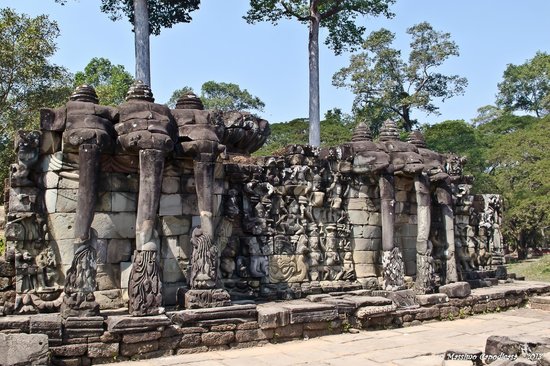

The Terrace of the Elephants is one of the most iconic and remarkable structures in the Angkor Archaeological Park, located in Siem Reap, Cambodia. It is a royal platform that was part of the larger complex of Angkor Thom, the last capital of the Khmer Empire. The Terrace of the Elephants was built in the late 12th century during the reign of King Jayavarman VII (1181–1218 AD). Jayavarman VII was one of the most powerful and influential kings of the Khmer Empire and is also credited with expanding the empire’s territory and building many of its most famous monuments. The terrace was likely used for royal ceremonies, public appearances, and rituals, as well as a platform for the king and his court to observe parades, military victories, and other state events. It may also have served a ceremonial function, as evidenced by its symbolic depictions of elephants, which were revered in Khmer culture.


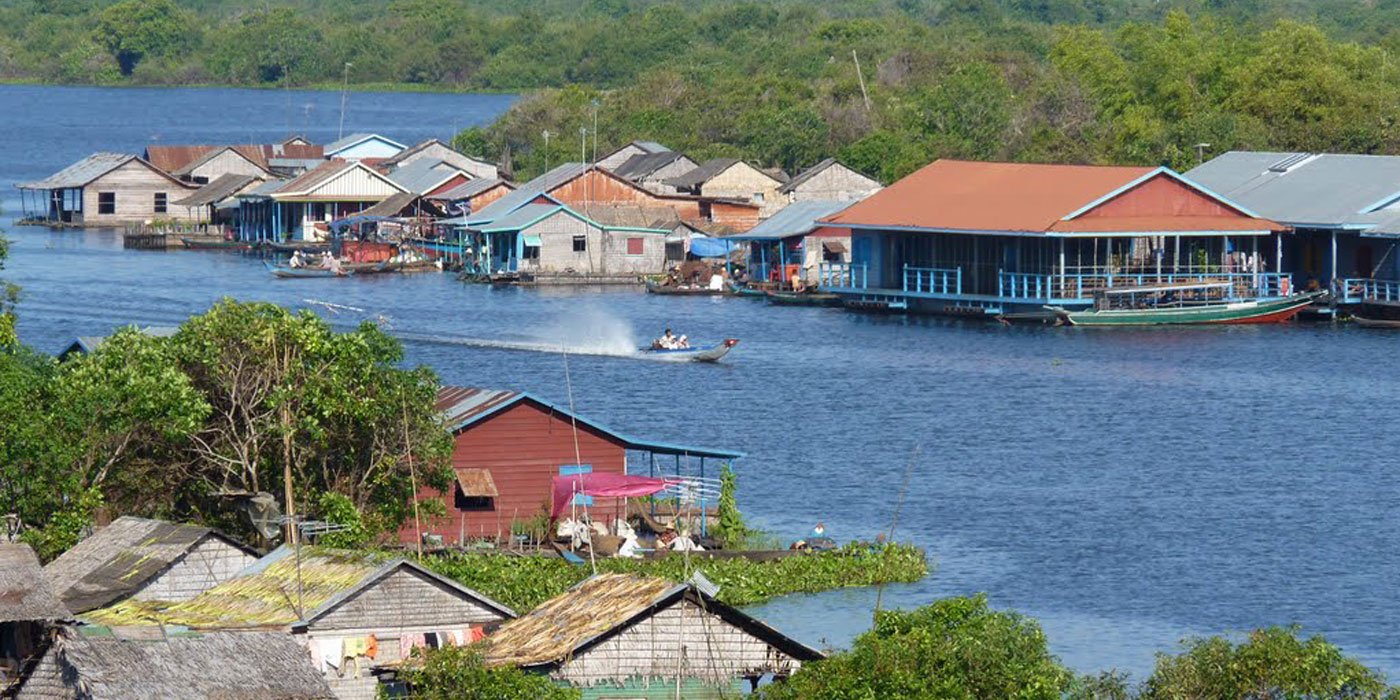

Kampong Phlouk Floating Village is a unique and enchanting community located in the heart of the Tonle Sap Lake, near Siem Reap, Cambodia. This picturesque village is renowned for its stilted houses, floating markets, and vibrant way of life that revolves around the ebb and flow of the water. Visitors to Kampong Phlouk have the opportunity to immerse themselves in the rich culture and traditions of the local residents, who have adapted to living on the water for generations. The residents of Kampong Phlouk Floating Village lead a fascinating lifestyle that is deeply connected to the water. The village is home to a diverse community of fishermen, farmers, and artisans who rely on the lake for their livelihoods. Visitors can witness traditional fishing techniques, explore floating gardens, and interact with locals as they go about their daily routines. The village is also known for its colorful floating markets, where vendors sell fresh produce, handicrafts, and souvenirs from their boats. Kampong Phlouk Floating Village is also a hub for ecotourism and conservation efforts in Cambodia. The village is surrounded by a rich ecosystem of mangrove forests, wetlands, and bird sanctuaries that support a diverse array of wildlife, including rare bird species and endangered aquatic animals.
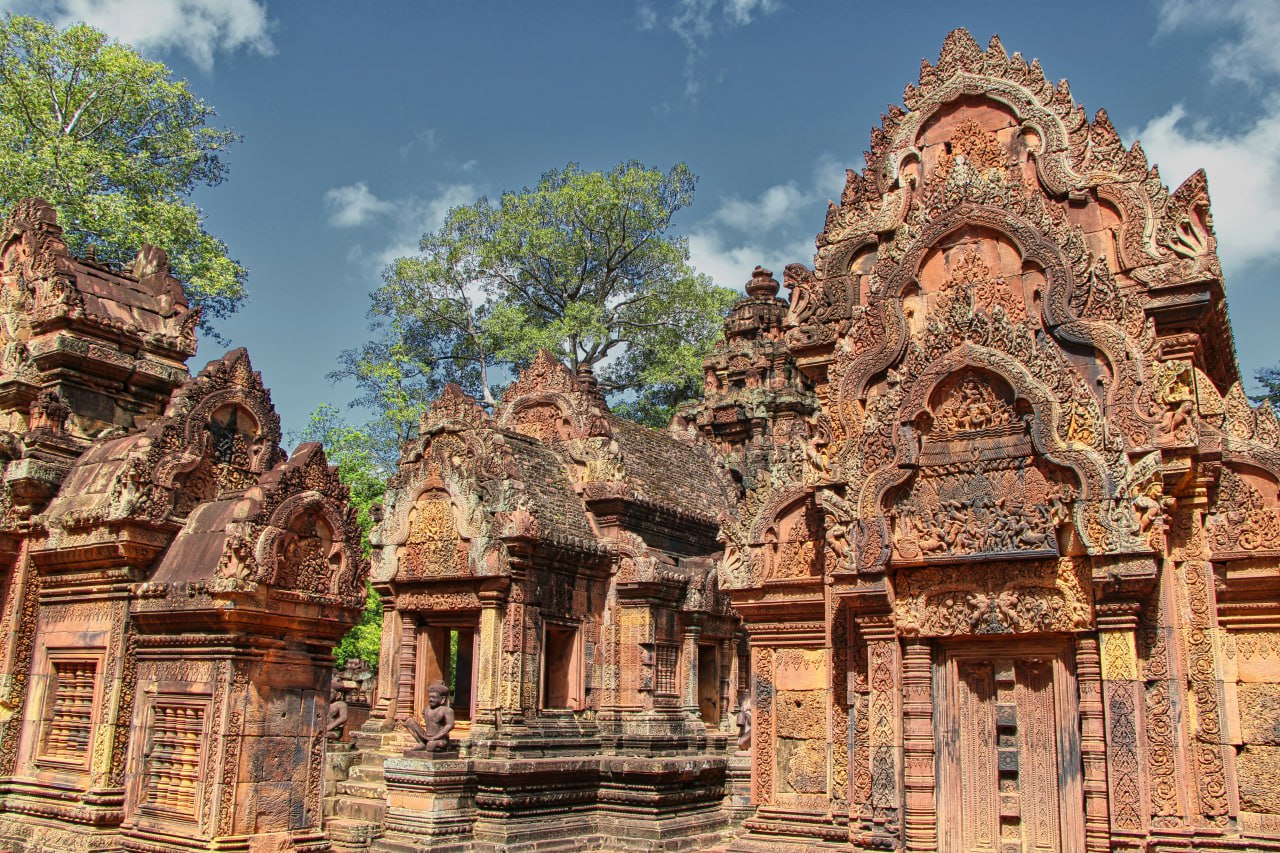


The Banteay Srei temple is a 10th-century Hindu temple dedicated to the god Shiva. It is renowned for its intricate and well-preserved pink sandstone carvings, which are considered some of the finest examples of classical Khmer art. The temple was built in 967 AD by a courtier named Yajnavaraha, who served as an advisor to King Rajendravarman II. Banteay Srei means “Citadel of Women” or “Citadel of Beauty” in Khmer, and it is believed that the temple’s delicate carvings were done by women due to their exquisite detail and craftsmanship. Banteay Srei is relatively small compared to other temples in the Angkor region, but its intricate carvings and well-preserved condition make it a popular tourist destination. The temple was rediscovered in 1914 and has since undergone extensive restoration to protect its delicate carvings from weathering and erosion. Today, Banteay Srei is considered one of the jewels of Khmer art and architecture, showcasing the skill and artistry of the ancient Khmer civilization. It is a UNESCO World Heritage site and a must-visit for anyone interested in Cambodian history and culture.
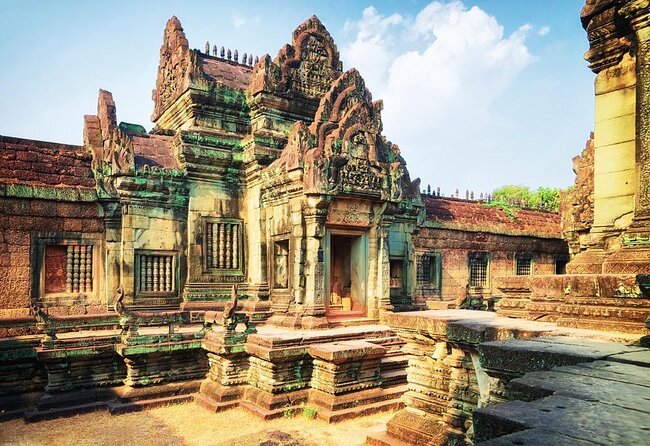


Banteay Samre is situated about 400 meters east of the East Baray and about 500 meters south of the east end of the Eastern Route of the Angkor Archaeological Park. Built in the mid-12th century during the reign of King Suryavarman II, the same monarch responsible for the grandeur of Angkor Wat, Banteay Samre is believed to have been dedicated to the Hindu god Vishnu. It represents one of the finest examples of classical Khmer architecture and artistry. The temple complex is surrounded by a moat, typical of Khmer architecture, and features a series of concentric galleries with towers at the corners. Its design resembles that of Angkor Wat but on a smaller scale. The temple is constructed with sandstone, adorned with intricate carvings, bas-reliefs, and decorative motifs, showcasing exquisite craftsmanship. Visitors can admire intricate carvings of gods, celestial dancers, warriors, animals, and floral motifs, providing insight into the culture and beliefs of the time. Banteay Samre is a hidden gem within the Angkor Archaeological Park, offering visitors a glimpse into Cambodia’s rich cultural heritage and architectural mastery. It’s a must-visit destination for anyone exploring the ancient wonders of Angkor.


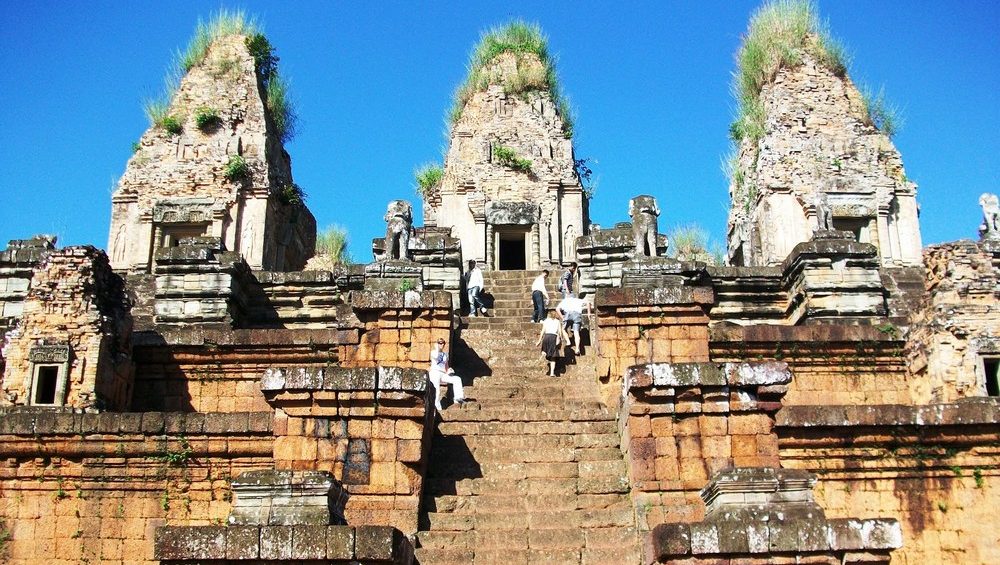
Constructed in the late 10th century during the reign of King Rajendravarman II, and completed by his successor, King Jayavarman V, Pre Rup is one of the oldest temples in the Angkor complex. It was dedicated to the Hindu god Shiva and served as a state temple for performing important ceremonies, including royal cremations. Pre Rup is renowned for its exquisite architectural design, characterized by towering brick and laterite structures with intricate carvings and decorative elements. The temple features a central sanctuary tower surrounded by three tiers of diminishing size, reminiscent of a stepped pyramid. Pre Rup is a popular spot for sunrise and sunset viewing due to its elevated position and unobstructed views. Many visitors flock to the temple in the early morning or late afternoon to witness the breathtaking spectacle of the sun casting golden hues over the temple’s spires and surrounding landscape. Pre Rup Temple offers visitors a captivating glimpse into Cambodia’s ancient past, with its impressive architecture, serene atmosphere, and stunning vistas making it a must-visit destination within the Angkor Archaeological Park.


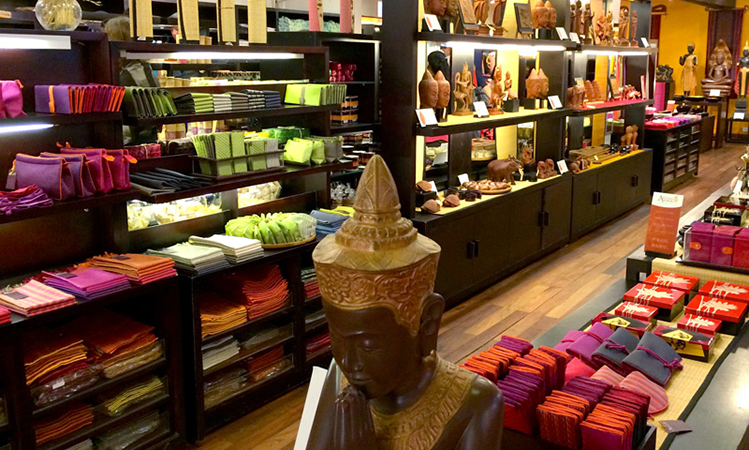


Artisans Angkor was created as a way to preserve Cambodia’s cultural heritage, promote sustainable development, and empower local communities through vocational training and economic empowerment. Artisans Angkor offers comprehensive training programs in various traditional crafts to young Cambodians from disadvantaged backgrounds, equipping them with the skills, knowledge, and resources needed to become skilled artisans and entrepreneurs. The organization’s workshops are led by experienced master craftsmen who pass on their expertise and techniques to the next generation of artisans. By upholding high standards of craftsmanship, creativity, and innovation, Artisans Angkor ensures the production of exquisite handmade products that showcase the beauty, authenticity, and quality of Khmer arts and crafts. Artisans Angkor produces a wide range of handmade products, including sculptures, jewelry, textiles, home decor items, accessories, and gifts that are inspired by Cambodia’s cultural heritage and natural beauty.
Know before you go
Feel free to adjust any details or add specific information relevant to your destination or travel agency. Let me know if you need further customization!
Copyright © 2024 Angkor Pioneer Tour.
Our team of passionate guides are here would love to hear from you.
